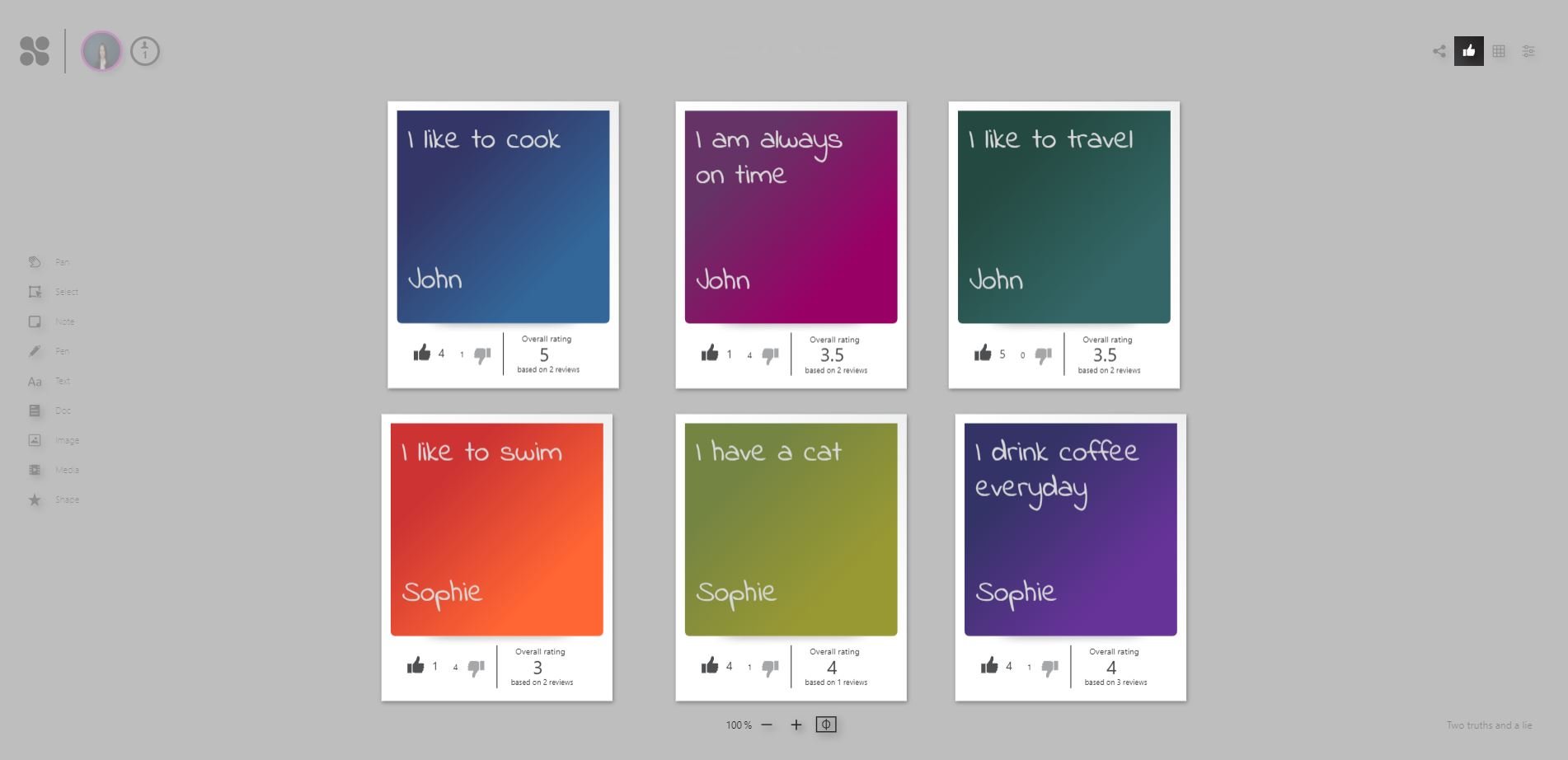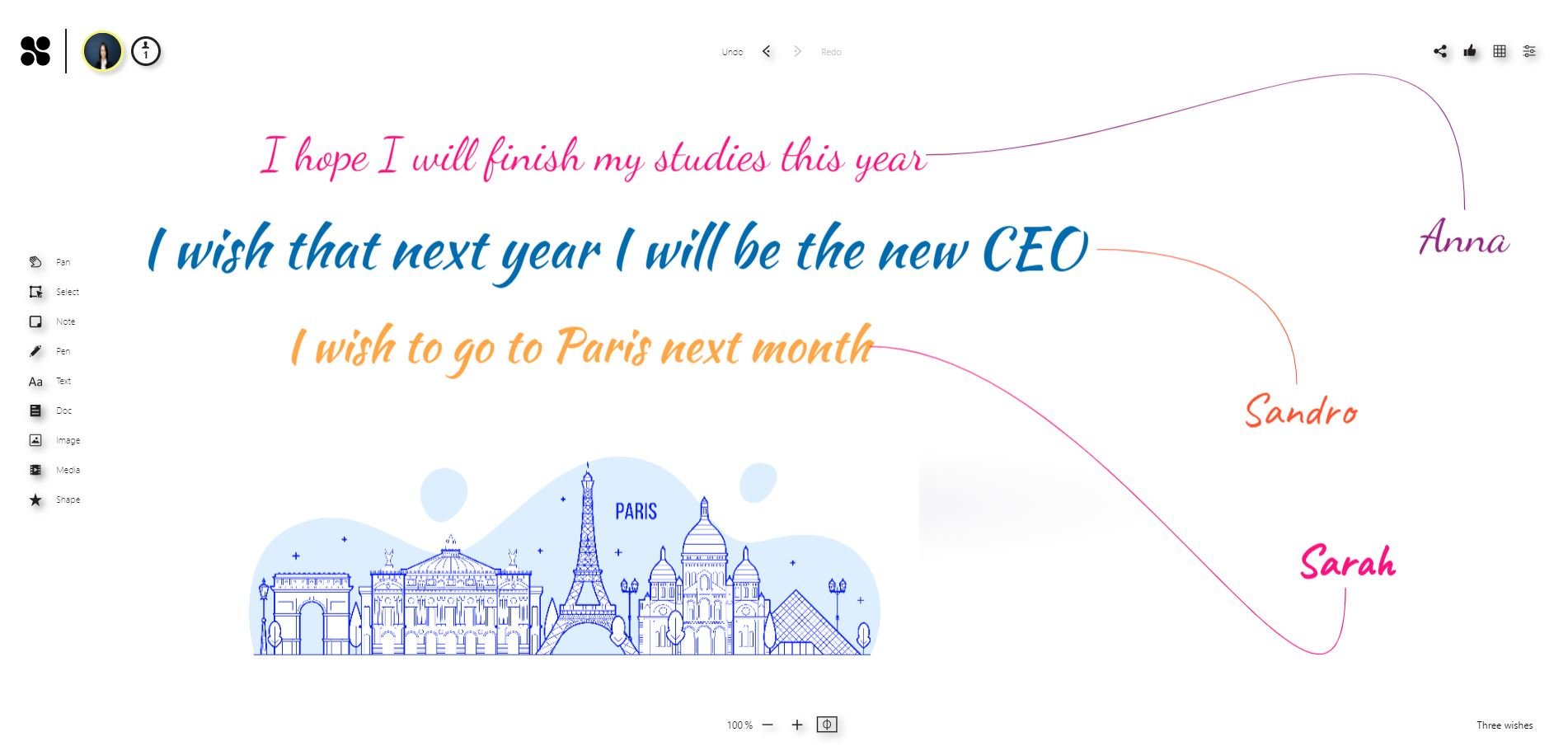
In this article, we write about warm-up games and ice breakers for remote meetings, workshops, training and coaching. We highlight our most favourite ice breaker games and explain to you how to perform them on an online whiteboard.
After reading, you will know how to play remote icebreaker games with your team.
Here are the three main reasons why warm-ups and icebreaker games should be done before a meeting, workshop, training or coaching:
Online-Whiteboards like Collaboard support these activities when done online.
Warm-up games
A warm-up game is a game that prepares you for a meeting, a workshop, a training, or an event. It is a short practice or example of what the activity will involve.
In the time of the pandemic, effective and enjoyable remote collaboration is important. Warm-ups are especially helpful for virtual interactions that cannot physically interact with each other. They bring a personal touch to online meetings.
Icebreaker
You likely know the problem: You are in a workshop or long meeting with people you do not know. To achieve the goals, everybody should work together smoothly.
Physical separation of people not only slows down many work processes, but also the methods of team building.
That’s what the icebreaker games are made for!
Every collaboration is much more effective once "the ice is broken". This kind of warm-up games is not only a successful start for team building but also create a positive atmosphere in every meeting, workshop, training or similar activities.
With an online whiteboard, you can adapt many different icebreaker games to the digital world.
Using an online whiteboard helps you to visualize the games and to make the collaboration funnier and more efficient.
Below you will find some examples of the icebreaker games and ideas on how to use an online whiteboard like Collaboard to perform them in your remote meetings.
This game is about finding out where all the participants come from. To prepare add a map to the whiteboard. Now everybody should take a picture of himself or upload a photo.
Afterwards people should guess from which country, region or city people are coming from. As soon as you found out from where a persons is from, draw on the whiteboard a line to the destination or move the picture of this person onto the map.
Below you see an idea of how we used the "Guess where I come from" ice breaker exercise in our last meeting with Collaboard.
The icebreaker game is useful for bigger companies and workshops, where the people meet the first time.
To encourage people to get to know each other better, you can organize a virtual meeting. Divide the audience into separate groups. Make sure close colleagues and friends are not in the same group.
Ask the groups to find 8-10 things that they all have in common and to put the pictures of these commonalities on the online whiteboard.
You may find that some participants for example have been to Budapest or many of the group members like the same food or use the same digital tools.
Before starting this icebreaker game, you should prepare an empty canvas with sections. Each participant will add the corresponding answers in the sections.
Now you start asking questions about special skills like:
"Do you have special skills/superpowers?"
"What is the biggest value you bring to the team?"
The participants add pictures, videos, photos or sticky notes on the online whiteboard, which illustrates their special skills.
Afterwards, everyone explains their special skills and how they can help the group achieve its goals. This often leads to discussions, which are very helpful for team building.
The game is very popular all over the world, not only for team building or online games but also for weddings and other big celebrations.
Preparation: Before the start, all participants send an old photo of their childhood (from baby age to puberty) to the moderator by email. The moderator sticks all pictures on the online whiteboard.
The moderator sets the timer to 2 minutes (possibly more depending on the participants). The participants should add sticky notes on the online whiteboard during this time and guess who is shown on each picture.
Afterwards, all participants will reveal one by one who is on which picture and what great memories are associated with it.
You could do it also with the pictures of your office desk, desktop, pets and many more.
This is one of the most creative and fun icebreaker games.
Each participant will come-up with three facts about himself: Two of them are true, and one is a credible lie. Everybody writes the facts on sticky notes on the online whiteboard.
Next, everyone shares their three statements and the group votes or discusses the presumption for the lie. For example, here are three statements about John:

Can you guess what the lie is?
This icebreaker is a great way to get to know each other and to laugh a little bit.
Talking about wishes and dreams is an excellent opportunity for improving the collaboration when working remotely.
In this virtual game, the participants are asked to select three wishes and discuss them within the group.
The online whiteboard Collaboard is very well suited for this. You can invite people to post a picture or video representing their wishes or dreams.

Then other participants can guess what they mean! They can also vote for the best dream or wish. This way, the participants become more creative and get to know each other better.
Here are questions to break the ice. Some of them are funny, others meaningful or serious.
The answers can be astonishing and show many characteristics of personalities and value systems of the participants.
The list is of course not exhaustive.
Here are popular icebreaker questions:
You can put the answers on the online whiteboard, discuss them together with your team members and have so much fun.
Almost all effective group activities like ice-breaker games work in a regular group size of 10 - 30 people.
But what if you should conduct a session where you have many more participants? The warm-ups and icebreakers, which work well with regular group sizes, will probably not work at all or not very effectively with larger groups.
It is often difficult to attract the attention of so many participants, even for an experienced facilitator. But don't worry, there are solutions to the problem!
Many games that are suitable for smaller groups can be played in parallel in subgroups. Before the game starts, the large group is divided into smaller subgroups.
It is usually recommended that each subgroup includes participants from different departments or areas. This allows the participants to organize themselves and to play the game effectively within their subgroup.
The subdivision into subgroups can be made according to any characteristics: age, favorite food, hometown/-land or hair color.
For online meetings and workshops, special characteristics can be considered: Size of the flat or house, distance from the main office in kilometres and so on.
The results of a first icebreaker game can also be used for future activities. For example, the results of the "Guess where I come from" can help in the subdivision according to the characteristic origin.